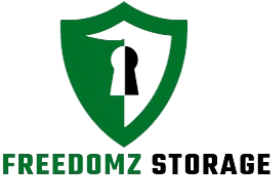As the CEO of FreedomzStorage, I am often asked by aspiring investors, entrepreneurs, and property developers: “How much does it really cost to build self-storage units?”
The truth is, there is no single figure. Costs vary depending on land, materials, design, and market conditions. But with industry benchmarks and experience, we can identify realistic ranges and prepare for the investment required.
Why Costs Differ from Project to Project
Every self-storage development is unique. Several factors determine whether you spend a few hundred thousand dollars or several million:
- Land Price & Location — Urban land is far more expensive than suburban or rural areas.
- Design & Structure — Single-story drive-up units are cheaper than multi-story, climate-controlled facilities.
- Materials & Labor — Prices fluctuate depending on steel costs, local wages, and supply chain.
- Permits & Regulations — Zoning approvals, impact fees, and environmental compliance can raise costs.
- Amenities & Technology — Adding climate control, automated access, or high-level security increases the budget.
At FreedomzStorage, we help clients assess these variables to avoid costly surprises.
Benchmark Cost Estimates
Here are common industry benchmarks for construction (excluding land costs):
- Single-story, drive-up units: $45 – $55 per sq. ft.
- General single-story facilities: $40 – $60 per sq. ft.
- Multi-story or climate-controlled builds: $65 – $85+ per sq. ft.
- Steel shell structures (basic): $8.50 – $14 per sq. ft.
To put this into perspective, a 20,000 sq. ft. facility may cost around $1M – $1.2M to construct, before adding land, permits, and finishing.
When you include land, site work, permits, engineering, and contingency, total project costs for a mid-sized facility often fall between $1.4M – $2M. Larger multi-story projects can easily reach $3M – $5M.
Cost Breakdown
Let’s look at the major components:
1. Land & Site Development
- Purchase of land, grading, utilities, drainage, and road access.
2. Building Construction
- Structural steel, walls, roof, partitions, doors, and finishes.
3. Interiors & Systems
- Electrical, lighting, plumbing, HVAC for climate-controlled units.
4. Security & Technology
- CCTV, access gates, alarms, and management software.
5. Permits & Professional Services
- Architecture, engineering, permits, surveys, legal, and inspection fees.
6. Contingency
- 5–10% buffer for unforeseen issues such as soil problems or material price increases.
Example Scenario
Imagine you want to build 100 storage units in a suburban area.
- Materials & construction: $50 per sq. ft. (average)
- 20,000 sq. ft. facility: ≈ $1M
- Land & site development: $250K – $500K
- Permits, design, and professional fees: $150K – $200K
- Technology & security: $50K – $75K
Estimated total cost: $1.4M – $1.8M
This illustrates how quickly costs accumulate — and why thorough planning is essential.
Tips for Reducing Costs (FreedomzStorage Insights)
At FreedomzStorage, we recommend:
- Build in phases — Start with fewer units and expand as demand grows.
- Use prefabricated steel systems — Saves time and money.
- Maximize land usage — Smart layouts increase rentable space per square foot.
- Get multiple bids — Ensure contractors provide detailed, transparent estimates.
- Plan for future upgrades — Leave room to add climate control or advanced security later.
Risks & Pitfalls
- Delays & Inflation — Rising steel and labor costs can inflate budgets.
- Zoning & Regulation — Unexpected legal hurdles may add months to the timeline.
- Overbuilding — Always align unit supply with local market demand.
- Maintenance — Factor in long-term costs such as roofing, doors, and HVAC replacement.
Final Thoughts
The cost to build self-storage units is significant, but so is the long-term opportunity. With proper planning, realistic budgeting, and professional guidance, a storage facility can become a highly profitable, recession-resistant investment.

